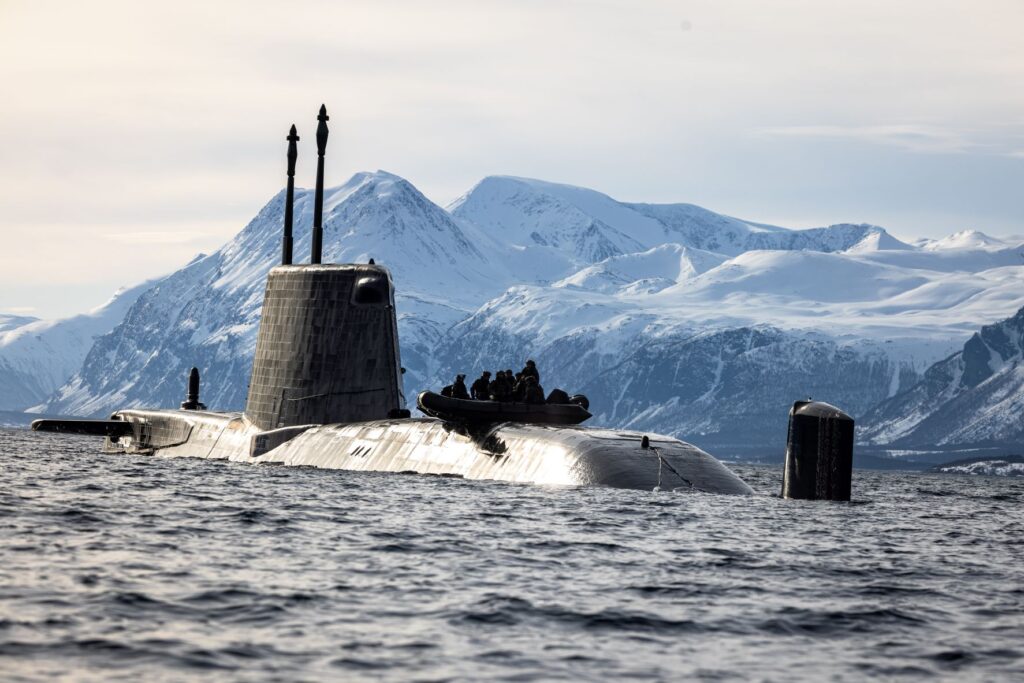
LONDON — As the United Kingdom adapts to the consequences of conventional war in Europe and wider emerging security challenges, it is preparing to refresh its 2021 Integrated Review (IR) of defense, security and foreign policy. The United Kingdom has already delivered on several naval capability developments outlined in the IR. However, an ‘IR Refresh’ may enable the United Kingdom to enhance certain elements of its naval force posture.
These themes were discussed by U.K. Chief of Defence Staff (CDS) Adm. Sir Tony Radakin, in the annual CDS lecture at the Royal United Services Institute, London on Dec. 14.
Radakin pointed to three premises in the global security situation: that current times are “extraordinarily dangerous”; that these “extraordinary times call for an extraordinary response,” which is being delivered and is countering Russia’s aggression in Ukraine; and that the response to the Ukraine war has reinforced U.K. requirement to retain a global outlook.
In the Ukraine war, focus falls on land operations. However, Radakin outlined the wider maritime context. Russian naval losses have been significant, with 12 ships (including a capital ship, the Slava-class cruiser Moskva) lost at sea or in port. In return, NATO has become stronger at sea, with Radakin noting the “hard power amassed” in the North Atlantic.
The 2021 IR identified Russia as an acute threat and China as an emerging challenge, Radakin said. However, he added, “what has happened is that events of the past year have trended towards the most negative scenarios we envisaged in the IR.”
Reflecting Western focus on high-end conventional warfare as a consequence of conflict in Ukraine, Radakin explained that the United Kingdom has delivered several significant naval capability developments since the IR. “We’ve placed the contract for the second batch of Type 26 frigates, and for the Naval Strike Missile [NSM]. The Fleet Solid Support [FSS] Ship program is moving forward, and we’ve purchased a new Multi-Role Ocean Survey Ship [MROSS] to protect our critical underwater infrastructure.”
November was a busy month for the Royal Navy (RN). The contract was awarded for the second Type 26 batch, comprising the final five hulls of the eight-ship class. The United Kingdom announced that 11 RN ships — a mix of Type 23 frigates and Type 45 destroyers — will receive an NSM fit, with three fitted in time for operational deployment within 12 months. The United Kingdom also down-selected an FSS supplier.
Progress will continue into early 2023, when the RN is scheduled to receive the first of two MROSS vessels.
The ‘IR Refresh’ will have to address continuing challenges with Russia, but should maintain a global perspective, Radakin argued. Tackling the threats facing the United Kingdom, the review would also present opportunities.
Radakin pointed to the September 2021 Australia/UK/US (AUKUS) accord, at the core of which is building a nuclear-powered attack submarine (SSN) capability for Australia. This may enable the United Kingdom to re-assess its own SSN force level, Adm Radakin explained. “If we have the courage to do this properly, then it’s also the means to strengthen the resilience of our own nuclear enterprise and grow our submarine numbers in the decades to come,” he said. “This will benefit our contribution to NATO as well as our presence in the Indo-Pacific.”
The ‘IR Refresh,’ Radakin continued, “[is] about thinking big: accelerating the transformation of the armed forces to become even more lethal and integrated; maximising the capabilities that offer a decisive advantage; being even more global in our outlook.”
To deliver this global outlook, Radakin asked, “might it mean a British carrier regularly deployed in the Indo-Pacific at the heart of an allied strike group?”
- UK Chief of Defence Staff Highlights Maritime Context Within Defense Review Refresh - December 21, 2022
- Naval Stakeholders Assess Lessons Learned from Ukraine Conflict for Future War at Sea - October 24, 2022
- NATO Uses Unmanned Systems Exercises to Stay Ahead in Capability Development - October 10, 2022






